FemtoLux
Hochleistungs-Femtosekunden Laser für Wissenschaft und Industrie
Der FemtoLux Laser wurde von Grund auf für maximale Zuverlässigkeit, nahtlose Integration und einen durchgehenden 24/7/365-Betrieb ohne Wartung entwickelt. Eine breite Palette an Optionen ermöglicht es ihn individuell an Ihre gewünschte Materialbearbeitungsaufgaben anzupassen.

Features
- Bei 1030nm
50W typische mittl. Leistung und > 300 µJ maximale Pulsenergie - Optionale Zweite und Dritte Harmonische mit
515nm: 20 W mittlere Leistung und > 50 µJ maximale Pulsenergie
343nm: 10 W mittlere Leistung und > 25 µJ maximale Pulsenergie - Hoch-Energie Version verfügbar mit 1 mJ Pulsenergie bei 10 kHz
- > 750 µJ Gesamtenergie eines MHz-Burst Pulszuges
- < 350 fs – 1 ps, optionale Erweiterung bis 1 ns
- Einzelschuss bis 4 MHz
- MHz, GHz, MHz+GHz Burst-Modi
- Pulse-on-demand (PoD), mit geringem Jitter von 20 ns (peak-to-peak)
- < 0.5% RMS Leistungsstabilität über 100 Stunden
- M² < 1.2
- Strahl Zirkularität > 0.85
- Netzteil und Kühlung in einem 19″ Gehäuse mit 4 Höheneinheiten verbaut
- Turn-Key System
- Kompatibel zu Galvo- und Polygonscannern, sowie PSO Kontrollern
Besonderheiten
- Wartungsfrei für besten 24/7 Einsatz
- „Dry c/ooling“ (kein Wasserkreislauf)
- Flexibelster MHz-GHz-Modus
- kleiner Foot-Print
Anwendungen
- Schneiden, Abtragen, Strukturieren
- Through Glass Vias (TGVs) Herstellung in Glas
- Dünnschicht Glas-Schneiden
- Nitinol-Stent Bearbeitung
- Herstellung von Mikro-Elektroniken
- Wärme-sensitives Schneiden von Polymer
- Beschriften von dickem Glas
- Schwarz- und Farbmarkieren medizinischer Werkzeuge
Was mögen die Anwender am FemtoLux



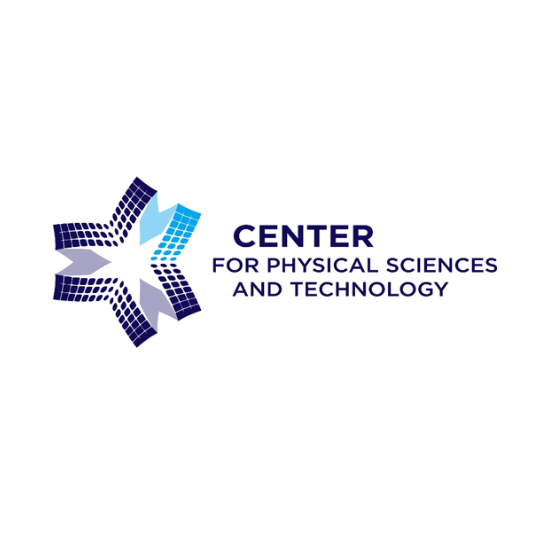
Anwendungen
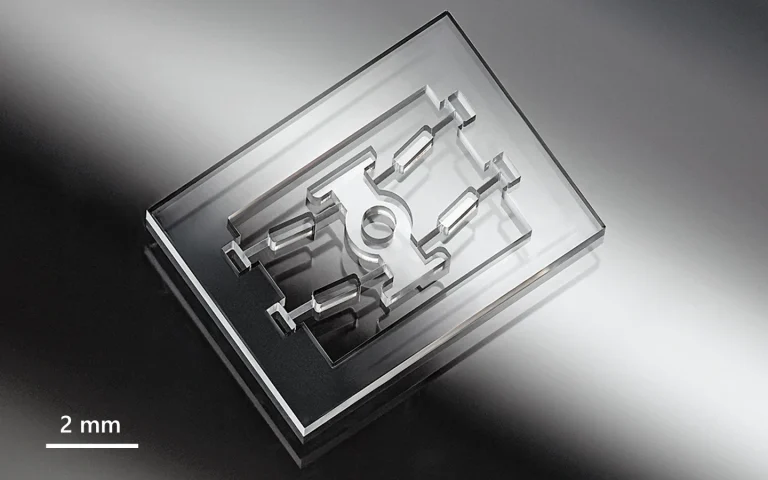
Glasbearbeitung
Femtosekundenlaser haben die Möglichkeiten für die Glasbearbeitung auf eine neue Ebene heben können. Dadurch ist es nun ein schneller und präziser Abtrag von komplexen Strukturen bis in den µm-Bereich möglich.
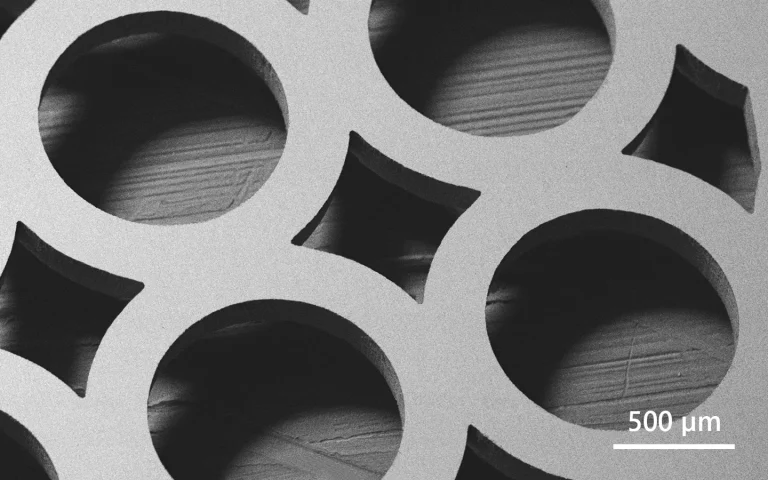
Metallbearbeitung
In der Metallbearbeitung sind Femtosekundenlaser die ideale Lösung für die Fertigung komplexer, feiner Strukturen bei hoher Prozessgeschwindigkeit. Weiterhin ermöglichen sie schwarz/weiß und farbliche Markierungen ohne Einsatz chemischer Zusätze.
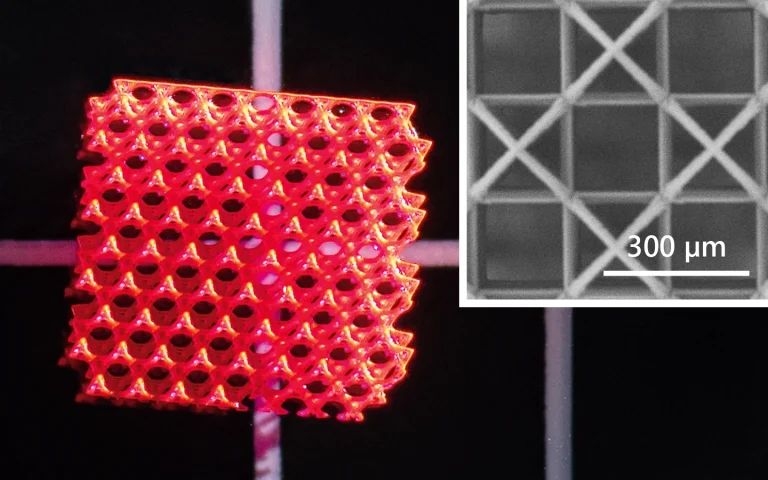
Polymerbearbeitung
Femtosekundenlaser sind aufgrund der besonders kurzen Pulsdauer besonders gut für die Bearbeitung von Polymeren geeignet. Da bei der kurzen Pulsdauer nur ein sehr geringer Wärmeeintrag ins Material entsteht, erfolgt der Abtrag sehr präzise und ohne Veränderung der Materialbeschaffenheit.
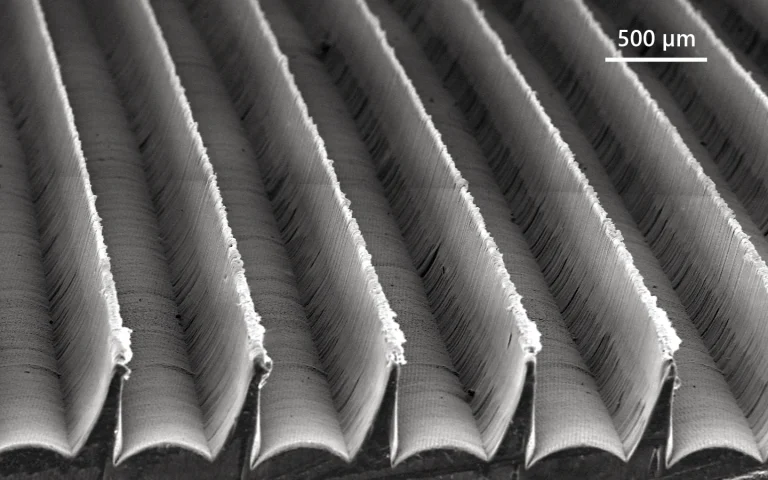
Bearbeitung Weiterer Materialien
Im Vergleich zu traditionellen Bearbeitungsverfahren erlauben Femtosekundenlaser aufgrund der besonders kurzen Pulsdauer eine außergewöhnliche Präzision bei der Bearbeitung. So können mit diesen effizient anspruchsvolle und unkonventionelle Formen und Oberflächen erstellt werden.
Anwendungen
Wissenschafliche Veröffentlichungen
Comparative analysis of microlens array formation in fused silica glass by laser: Femtosecond versus picosecond pulses
L. Zubauskas, E. Markauskas, A. Vyšniauskas, V. Stankevič, and P. Gečys, Journal of Science: Advanced Materials and Devices 9 (4), 100804 (2024). DOI: 10.1016/j.jsamd.2024.100804.
The growing demand for flexible, high-quality fabrication of free-form micro-optics drives the development of laser-based fabrication techniques for both the shape formation and surface polishing of optical elements. In this paper, we performed a thorough and systematic study on fused silica glass ablation using 10 ps and 320 fs duration pulses. Ablation processes for both pulse durations were optimized based on the measurements of the removed material layer thickness and surface roughness, and by analyzing the topographies of ablated cavities to remove material layers as thin as possible with minimum surface damage. Our findings demonstrate higher process resolution and surface quality for femtosecond pulses. Ablation of pre-roughened glass reduced the minimal removable glass layer thickness well below the 1 μm mark for both pulse durations, improving the process resolution. The minimal removable glass layer thickness was 14 times smaller for the femtosecond pulses, with up to 4.5 times lower surface roughness compared to samples processed with picosecond pulses. On the other hand, results revealed faster glass removal rates with picosecond pulses. In the end, arrays of microlenses were fabricated with both pulse durations and subsequently polished with a CO2 laser. Results revealed higher performance of microlenses fabricated with femtosecond pulses, providing better focusing capabilities and lesser beam scattering. Finally, this study demonstrated the successful fabrication of free-form optical elements with femtosecond and picosecond pulses, demonstrating the versatility and the potential of laser-based techniques.
The ultrafast burst laser ablation of metals: Speed and quality come together
A. Žemaitis, U. Gudauskytė, S. Steponavičiūtė, P. Gečys, and M. Gedvilas, Optics & Laser Technology 180, 111458 (2024). DOI: 10.1016/j.optlastec.2024.111458.
Utilisation of high-power ultrafast laser for ablation-based industrial processes such as milling, drilling or cutting requires high production rates and superior quality. In this paper, we demonstrate highly efficient, rapid and high-quality laser micro-machining of three industrial metals (aluminium, copper, and stainless steel). Our proposed optimisation methods of pulse energy division in time result in simultaneous enhancement of ablation efficiency (volume per energy) and ablation rate (volume per time) while maintaining a focused laser beam on the target surface and high resolution. A high-tech femtosecond burst laser, producing laser pulses of τ = 350 fs duration and intra-burst repetition rates of fP = 50 MHz, was employed in the experiments. Due to the utilisation of bursts, material removal efficiency and removal rate were increased by 18.0 %, 44.5 %, and 37.0 % for aluminium, copper, and stainless steel if compared with the best performance of single-pulses. In addition to the high processing rate, processing by burst mode resulted in lower surface roughness. This technique is believed to be a solution enabling extremely high femtosecond laser powers for precise microfabrication.
Ultrashort Pulse Bursts for Surface Laser Polishing
S. Steponavičiūtė, P. Gečys, G. Račiukaitis, M. Gedvilas, and A. Žemaitis, in Optics, Photonics and Lasers OPAL’ 2024 Conference Proceedings, S. Y. Yurish, ed. (IFSA Publishing, 2024), pp. 44.
Laser polishing offers numerous advantages, one of which is the convenience of using the same system for the
whole manufacturing process. In this work, an ultrashort pulse laser operating in a GHz burst regime was used to polish
stainless steel. The aim was to minimise surface roughness, characterised by the average roughness parameter Ra. Different
laser processing parameters (average laser power, number of pulses per burst, scanning speed, hatch size) were varied to polish
samples that were covered in laser-induced periodic surface structures (LIPSS). Thermal effects, such as melt layer formation,
were noticed and discussed. It was demonstrated that LIPSS can be erased and the initial surface roughness of 73 nm was
reduced to 41 nm using 100 pulses per burst and burst fluence of FB = 0.15 J/cm2.
